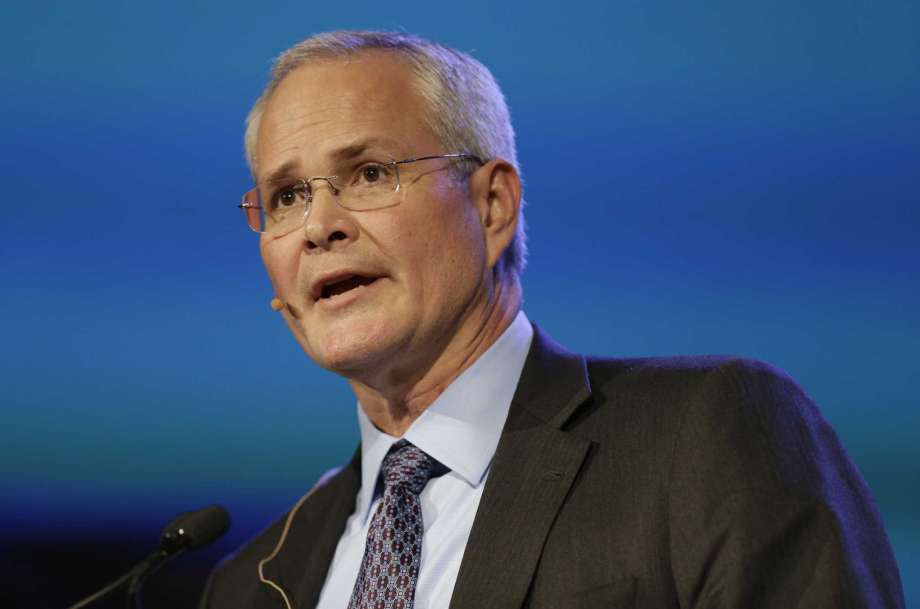
Exxon Mobil is seeking to maintain its top spot in the world of Big Oil by hiking spending and aiming to churn out increasingly higher volumes of oil and gas with a strong emphasis in West Texas and South America.
Exxon Mobil Chief Executive Darren Woods said Wednesday the company is hiking its 2019 capital spending by 15 percent to $30 billion with a plan to raise spending to $35 billion in 2020 – all while many smaller companies cut back.
The Irving-based energy giant said it plans to increase its annual earnings by more than 140 percent by 2025 from 2017 if oil prices remain relatively stable.
“We are exceeding the pace of our expected progress on the aggressive growth strategy we laid out last year,” Woods said. “We continue to enhance our industry-leading portfolio, and are leveraging our competitive advantages in integration, scale, technology and execution to deliver long-term value for our shareholders.”
Exxon said Tuesday it is dramatically increasing its expectations for the booming Permian Basin. As the most active driller in the region, Exxon plans to produce 1 million barrels of oil equivalent a day in the Permian as soon as 2024 – way up from a 2025 projection of 600,000 barrels just a year ago.
Exxon Mobil said it is estimating its recoverable resources in the Permian at 10 billion barrels of oil equivalent – a number Woods said is expected to rise higher.
To help process all of the extra Texas oil, Exxon recently announced an ambitious expansion of its Beaumont refinery to make it arguably the largest refinery in the country. Exxon also is progressing a roughly $8 billion petrochemical complex near Corpus Christi that it will jointly own with Saudi Arabia.
Outside of Texas, Exxon’s biggest point of emphasis is offshore of the small South American nation of Guyana. Exxon Mobil said it again hiked the estimate of its discovered resources offshore of Guyana another 10 percent from 5 billion barrels to 5.5 billion. In December, Exxon had increased the estimated reserves from 4 billion barrels to 5 billion.
Overall, Exxon’s stock value has been largely stagnant for three years – down from the highs of strong oil prices in 2014, but up from the crash in 2015.
For comparison, arch rival Chevron’s stock is up 30 percent from March 2016. However, Exxon Mobil is still by far the nation’s largest energy company with a Wall Street value of about $333 billion compared to Chevron’s $235 billion value. On Tuesday, Chevron announced similar production spike estimates for the Permian.
To keep its spending balanced, Woods said Exxon expects to sell $15 billion of global assets from 2019 through 2021.
Also in South America, Exxon Mobil said it has grown its position in Brazil to 2.3 million acres, adding 800,000 acres in 2018.
Exxon also is ready to go big into liquefied natural gas projects. Earlier this year, Exxon and Qatar said they’re advancing the big Golden Pass LNG export project in Texas near Port Arthur.
Exxon said the Rovuma LNG project in Mozambique is on track for authorization later this year, and its Papua New Guinea LNG project is advancing.
This article first appeared on the Houston Chronicle – an Energy Voice content partner. For more from the Houston Chronicle click here.
Recommended for you
